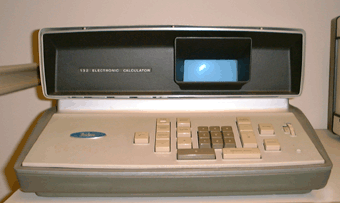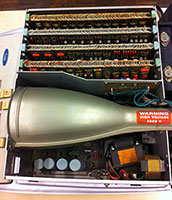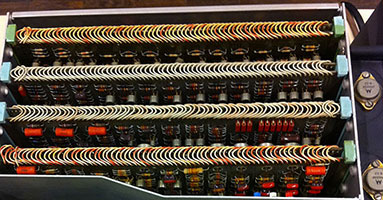Friden 132 electronic calculator
UvA Computer Museum catalogue nr 93.21

This principle, which obviates the use of parentheses, was later followed in the well-known pocket calculators of Hewlett-Packard.
The results of the computation are shown on a small CRT screen. The machine is built from separate transistors, memory is implemented using a magnetostrictive delay line.


The CRT (its socket protruding from the machine's enclosure) has a sticker warning for the 3 kV high tension.
The calculator logic is on four card-pairs with discrete transistors and passive components.
Our Friden 132 has been in use at the UvA Medical Physics Laboratory.
The website of the Old Calculator Museum provides a detailed description, including an explanation of the machine's ingenious square-rooting algorithm.
Rev. February 7, 2017.
